Product Introduction:
PAR sensor, also known as light quantum number, is mainly used to measure the photosynthetically active radiation of natural light in the wavelength range of 400 ~ 700nm. It is simple to use and can be directly connected to a digital voltmeter or data collector. It can be used in all-weather conditions.
The table uses a silicon photodetector and passes through an optical filter ranging from 400 to 700nm. When there is light irradiation, a voltage signal is generated which is proportional to the intensity of the incident radiation, and its sensitivity is proportional to the cosine of the direct Angle of the incident light. Each photosynthate active radiation meter gives its own sensitivity and can be directly read out in µmol/ m2·s. This table is widely used in agrometeorology, crop growth research.
* Model: JXBS-3001-GHFS-RS
* Minimum order quantity: 1 piece
* Delivery time: within 24 hours

Features:
The PAR (photosynthetically active radiation) sensor adopts the principle of photoelectric induction. The par sensor working principle: when there is light, a voltage signal proportional to the intensity of the incident radiation is generated, and its sensitivity is proportional to the cosine of the direct angle of the incident light. This par sensor uses high-precision photoelectric sensing elements, with high absorption in the 400-700nm spectral range and good stability. The shell adopts special treatment to reduce dust adsorption and effectively prevent the external environment from damaging the internal components. It is widely used in the research of meteorology, agriculture, air pollution, and other fields.
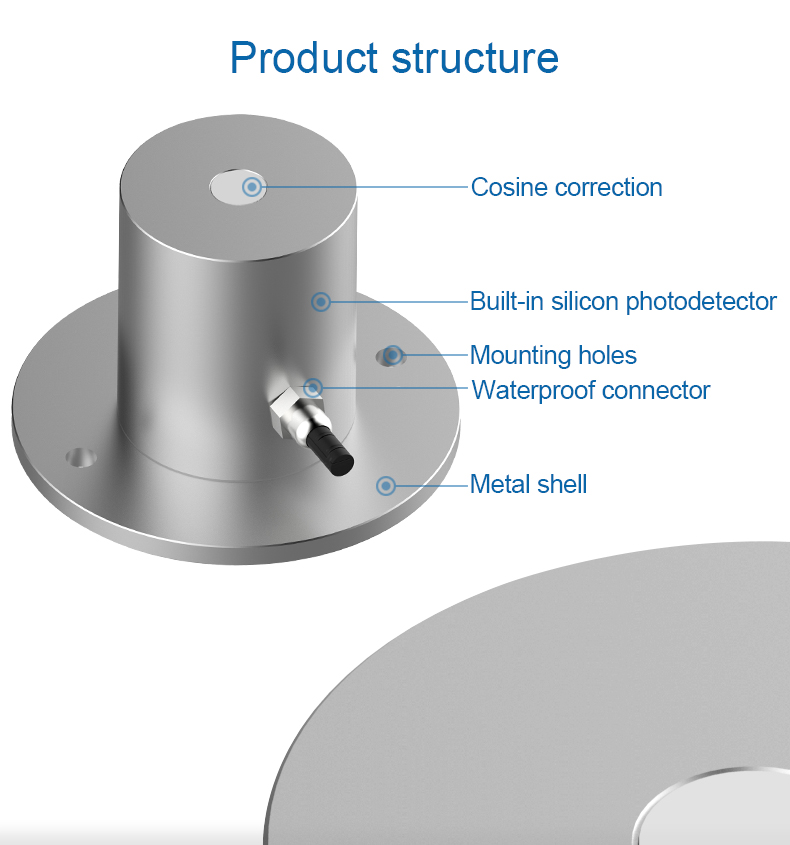
Parameters:
Determination parameters: Photosynthetically active radiation
Model: JXBS – 3001 – GHFS – RS
Communication mode: RS485
Power supply: 12-24V power supply
Measurement range: 0-2000
Material: Aluminum alloy
DC power supply (default) : 9-24V DC
Power consumption: ≤0.15W (@12V DC, 25℃)
Measurement range: 0-2000w/m2
Spectral range: 400-700nm
Resolution: 1w/m2
Working environment: -45-85℃ 0-100%RH
Cosine correction: up to 80° Angle of incidence
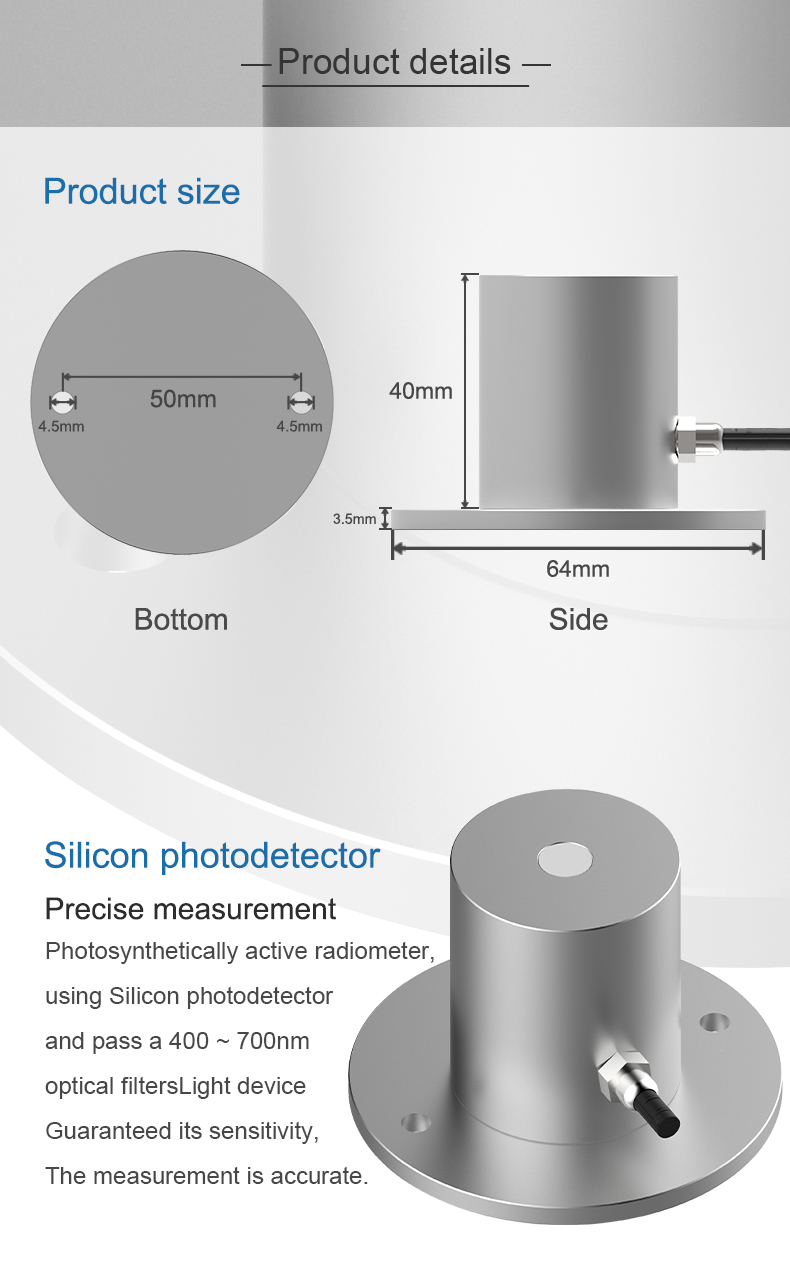
Attention:
Site selection: The ideal position of photosynthetically active radiation table should be that there is no obstacle on the upper end of the sensor element, so as to ensure that there is no obstacle in the direction of sunrise and sunset with a height Angle of more than 5°, and the phenomenon of shadow falling on the sensor surface should be avoided.
Product installation: It is recommended that users check whether the delivered products are damaged by transportation before installation, and contact the manufacturer in time. The FPH PSB strap has 2 screw holes and is equipped with 2 stainless steel screws. First of all, the photosynthetically active radiation meter is firmly fixed on the bracket, adjust the horizontal position, tighten it, and then connect the output wire with the data collector box, you can observe.
Product maintenance: continuous working Photosynthate radiation table at least once a week, check the content of the main cosine correction sheet is clean, such as ice, snow, dust and other should try to remove these sediments.

FAQs:
What is photosynthetically active radiation?
The spectral component of solar radiation that is effective for plant photosynthesis is called photosynthate active radiation, and its wavelength range is 380-710 nm, which basically coincides with visible light. The proportion of photosynthetically active radiation in the direct solar radiation increases with the increase of the solar altitude Angle, up to 45%. Among the scattered radiation, the proportion of photosynthetically active radiation can reach 60~70%.
How to maintain Photosynthetically active radiation sensor?
For par sensors used in wind-blown sand environments for a long period of time, the sensor housing can be periodically wiped with a soft, damp cloth to prevent sand and dust buildup. Check the level and screw looseness regularly.
Where is photosynthetically active radiation used?
1, applied to the study of plant photosynthesis, vegetation index, etc
2, greenhouse application
3. Agricultural production and application
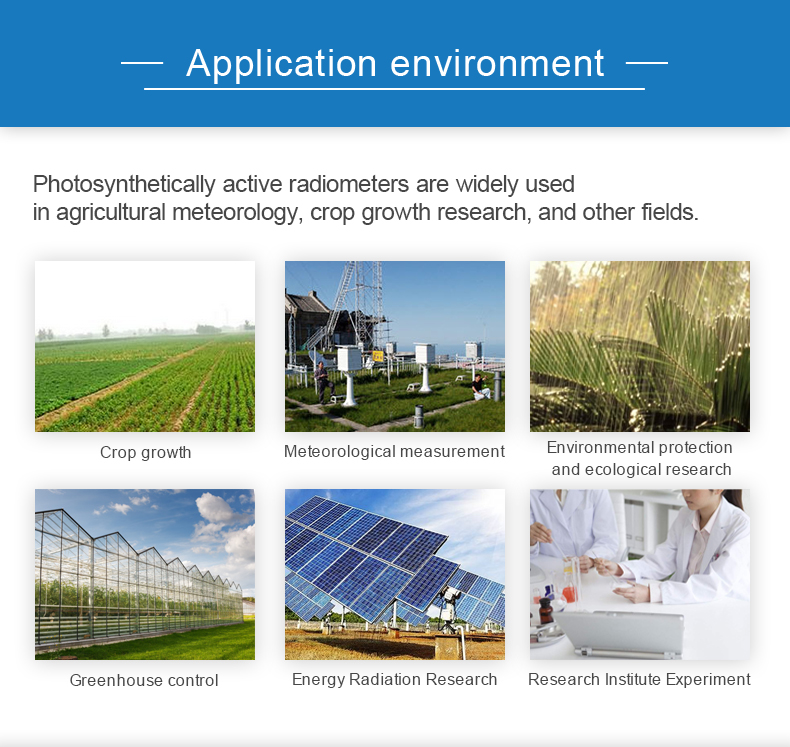

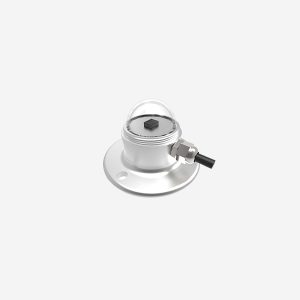
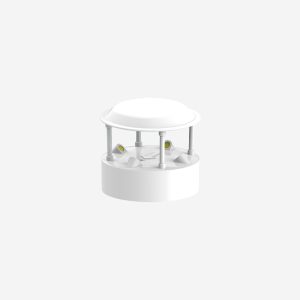
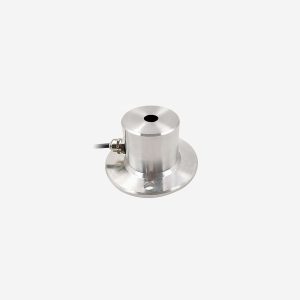
Reviews
There are no reviews yet.